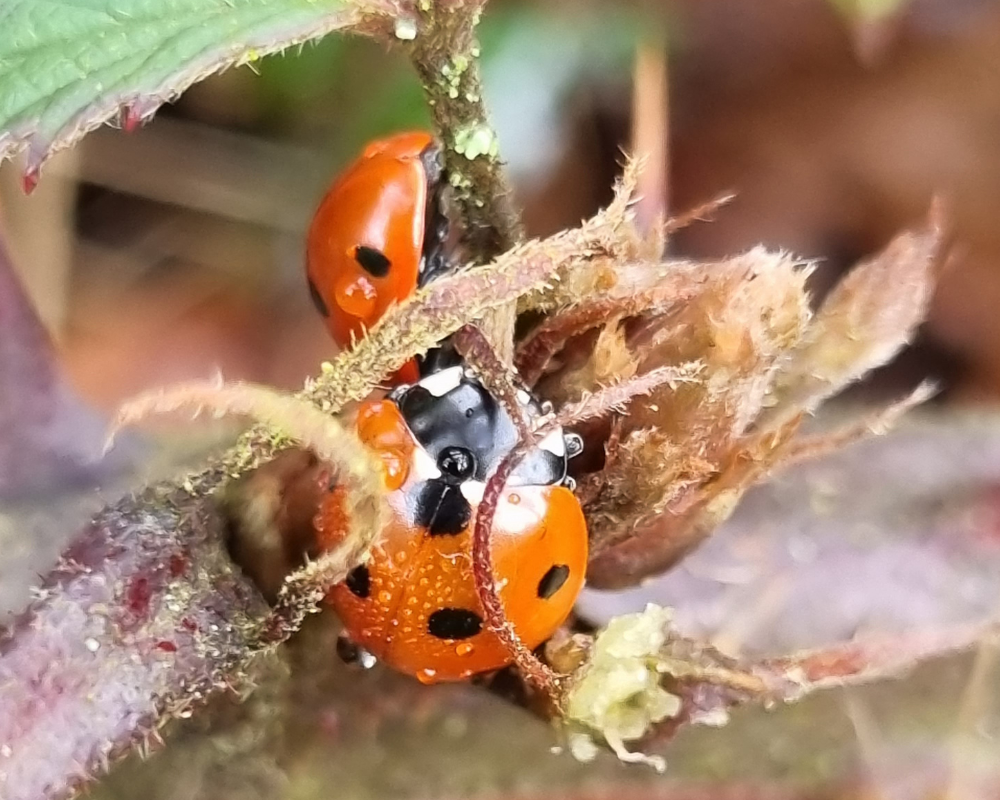
Biodiversity update - spring 2024
Wildlife surveys at Alne Wood are regularly carried out by staff and volunteers. Avery, Assistant Biodiversity Officer at the Heart of England Forest, updates us on some of the wildlife which has been surveyed by volunteers and staff during the spring months.
Butterflies
Despite bad weather throughout April, butterflies are doing well at Alne wood which is good for biodiversity as they are important pollinators. Butterflies spotted by our regular weekly surveying include brimstones, a speckled wood, a male orange-tip butterfly - who rely on cuckoo flowers that are found at the burial ground, and a peacock butterfly (these over-winter, so need suitable habitat to survive).

Ladybirds
Ladybirds are doing especially well at Alne wood, the native 7-spot ladybird are huge in number, one survey finding 72 of these ladybirds. Two 14-spot ladybirds were also found at the site, which is a first record for the site! Native ladybirds are threatened by the invasive harlequin ladybird and so far none have been found at Alne wood.
Ladybirds provide natural pest management, preying on plant damaging invertebrates. Predatory invertebrates have declined by 40% since the 1970s, so it is important to monitor these species and provide suitable habitat for them to thrive.

Woodlice
Woodlice are an important part of the decay cycle, breaking down dead organic matter and recycling the nutrients back into the habitat. Without woodlice, plant life would suffer. These invertebrates rely on leaf litter and deadwood.
Our surveys have found that woodlice are abundant in Alne wood! Each survey over 100 woodlice are found each time, with a huge variety of woodlice! The common pill woodlouse, the common striped woodlouse, the common pygmy woodlouse, the common shiny woodlouse and the rosy woodlouse!

The importance of surveys in the Forest
The Forest includes large areas of newly planted broadleaf woodland, but also significant areas of mature and ancient woodland, grassland, heathland, farmland, and wetlands, all of which provide niches for an array of biodiversity which we monitor with the help of volunteers.
Carrying out surveys for plants and animals is essential for us to learn what we have in the Forest and help to species thrive.
Find out more about surveying the the Forest

